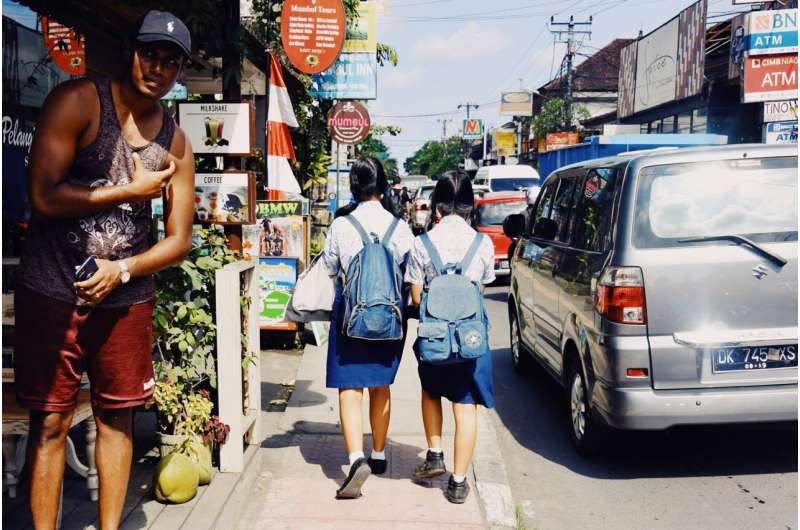Bali gives a snapshot of what 'overtourism' looks like in the developing world

Barcelona residents marched against tourists in after similar protests in earlier in 2024. Recently, residents of Santorini in Greece were in uproar after a Facebook post reportedly asked them to and make room for the thousands of tourists expected to arrive during the peak holiday season.
These are symptoms of : a situation where visits exceed a destination's capacity, making residents angry and tourists miserable. Local governments have proposed or entry fees to make visits more expensive and thereby limit how many people show up. Some tourism researchers have encouraged people to holiday in rural areas or poorer countries instead, to give a boost to their economies.
However, overtourism exists in the developing world too. Here's what it looks like.
Travel on a tourist-swamped island
Bali is a major tourist destination in the Indonesian archipelago that accounts for nearly half of . Air travel is the most reliable way to get there, although , which inflame a climate crisis that is expected to disproportionately harm poorer countries like . Roughly 15 million visitors arrived in — to their level in 2019, before the pandemic.
Bali's tourism-dependent economy () was more or less frozen by COVID-19. Yet, for tourists who spent lockdown in cities, the pandemic also left Bali, and particularly the island's , with a renewed luster. Penglipuran, a traditional Balinese village in the central highlands, was attracting thousands of visitors .
Encouraging people to visit poorer areas can disadvantage residents, but in a different way to how people in or experience it. After all, roads and public transport in richer European cities are better maintained.
The steady rise in tourists mean the roads in Bali get busier . There is a roughly one-to-one ratio of , while . Congestion prevented travelers for six hours ahead of New Year's Eve 2023.
In rural Bali, the hilly terrain, tropical weather and poorer public transport mean residents must rely on cars and motorbikes. The resulting noise and pollution degrades the rural experience. Converting these vehicles to run on electricity would not solve the problem entirely if most power in Bali remains . Nor would it cut road congestion.
to visit lots of places in rural Bali with a reliable source of transport. The limited options have prompted many to rent cars or motorbikes, but weak traffic enforcement has allowed : tourists driving —or even licenses. The regional government temporarily in March 2023.
Despite chaotic traffic on the island, residents have found work transporting tourists informally for . That's why efforts to ease congestion and travel chaos, by designing public transport for tour groups or free shuttle bus services, have met with and the ire of vehicle rental businesses.
To travel or not to travel
Unbridled development squanders the mutual benefits that tourism can have for residents and visitors. Likewise, neither residents nor tourists should be prohibited from traveling, but should instead travel responsibly.
A that promises to connect Bali's airport with Seminyak and Nusa Dua, the most popular areas in urban Bali, could help ease road traffic around the city center. Local vehicle rental businesses could continue to operate in rural areas, but restrict their riders to less busy roads.
Poor destinations should be cautious about depending on tourism in the long term. The Balinese government is exploring its options in other sectors at least, such as .
Poorer destinations such as Bali are less well equipped than richer countries to manage the socioeconomic and environmental costs of overtourism. And ultimately, a swollen tourism sector contains the seeds of its own demise: declining environmental quality, unhappy residents and eventually, fewer tourists.
Provided by The Conversation
This article is republished from under a Creative Commons license. Read the .![]()



















